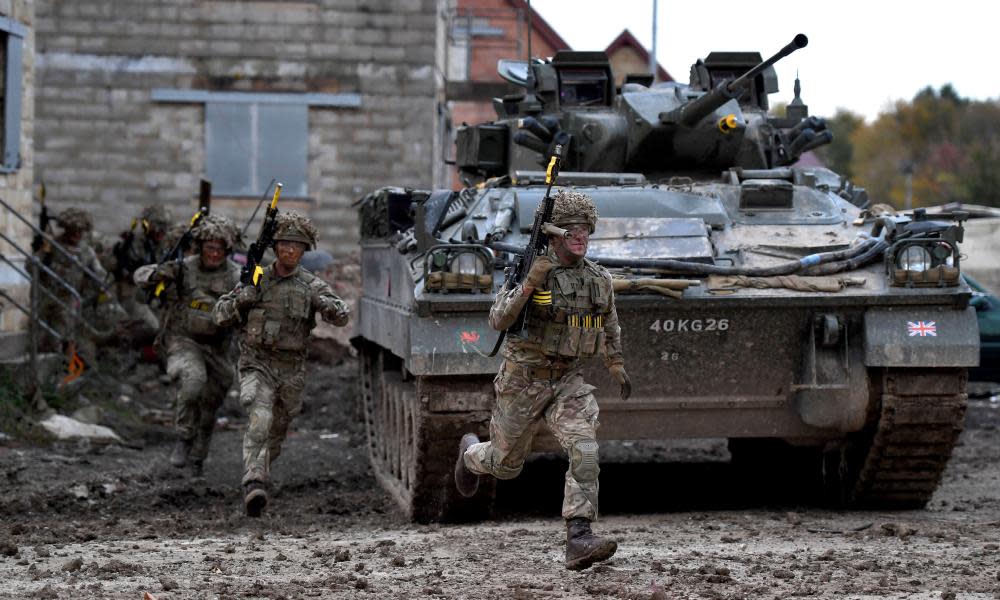Fact check: have the armed forces really had a pay cut?

Claim
The UK’s armed forces have “effectively had a pay cut over the last few years,” the shadow foreign secretary, Emily Thornberry, told the Today programme on Monday morning. She said they would be paid a “proper wage” under a Labour government.
Background
In an announcement timed for Armistice Day, Labour outlined five pledges to military staff, including to increase pay. The party said the Conservatives’ public sector pay cap meant that since 2010 the starting salary for an army private had fallen by 5.8% in real terms. “We ask them to make the ultimate sacrifice and the least we can do is to give them some decent pay,” Thornberry said.
Reality
The armed forces were given a pay rise this year after the government accepted a recommendation from the independent armed forces pay review body that base pay should be increased by 2.9%. Those on the lowest pay grades received a 6% increase, bringing the starting salary to £20,000.
However, the increase followed several years of below-inflation rises, which had brought down service personnel’s pay in real terms. In 2018 there was a pay rise of 2%, and prior to that the armed forces were part of the government’s public sector pay controls. As a result, in the two years after the coalition government came into power, the pay review board was instructed to recommend pay rises only for those earning below £21,000, and from 2013 to 2017 it was told to operate within a 1% cap. While some targeted pay measures were allowed, with the focus on areas where recruitment and retention were problems, across-the-board rises were restricted.
The average UK inflation rate between 2010 and 2017 was 2.87%, so each year military salaries fell further and further behind. This year’s increase to the starting salary has closed some of the gap but not all. Labour have not made it clear how they got to the 5.8% figure. But figures from the MoD on privates’ salaries [pdf] show that in 2010, an army private was on £17,014. Had that figure kept up with inflation it would be £21,635 today – £1,635 more than privates now get. That’s a fall of 7.5% in real terms.
While figures are not available in all cases, a similar calculation is likely to apply across most of the rest of the armed forces. For roles with salaries that have not been subject to targeted rises, and which had a 2.9% increase this year rather than 6%, the fall will be bigger.
Within the forces, individuals have been able to get pay increases as they have risen through the ranks, but in its latest report the pay body said that in 2018 more than two-thirds of personnel had not received this kind of rise.
Verdict
Despite a recent rise across the board, members of the armed forces have faced a real-terms pay cut since 2010.

 Yahoo News
Yahoo News 
